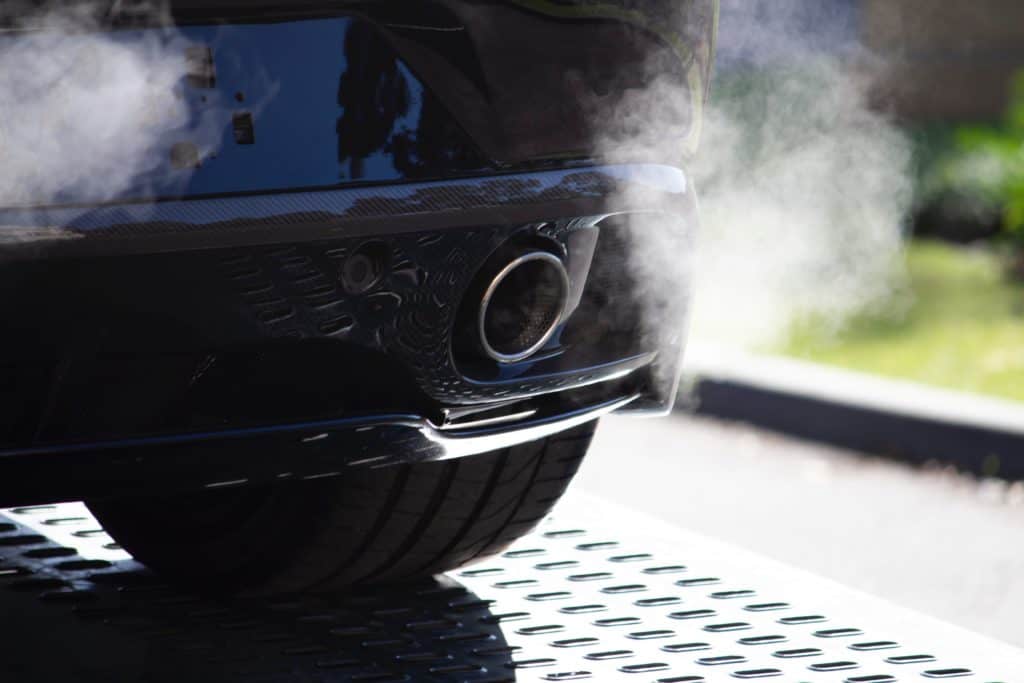California is one of the oldest states to register in the environmental pollution prevention. It should be noted that the management of environmental air pollutants is at present entrust in the hands of California Air Resources Board or CARB. Normally, this would mean regulating the gases that are released into the atmosphere, which are products of internal combustion engines.
Such an engine as a portable generator is used to convert fossil fuels into fuel and energy. However, these emissions are not as environmentally friendly as hoped for. These types of emissions are of great concern because they affect health and the surroundings. Consequently, there has got efforts on both state and nation levels to put in place laws that focus on the amount of carbon emissions released by engines.
First of all, it has to be mentioned that first the regulations were established for on-road vehicles. But the 1990s saw the least putting in place of provisions that took the form of small cars such as portable generators.
When deciding to purchase a generator, there are some key attributes to look for that are a little less obvious than the amount of electricity the generator can produce. Has the generator you picked been tested for the effects it has on health and the environment?Shoddy generator with smoke emission below the standard set can cause harmful impacts to the health?
What Does CARB Affect?
CARB primarily affects equipment that have internal combustion engines. Internal combustible engines are the types that burn fuel, which releases harmful gases such as methane and carbon. These gases can have adverse side effects on the environment.
The CARB rules and regulations also impact various heavy equipment, machinery, and automobiles. It’s a law that enforces any engine that uses combustible fuel, such as diesel or natural gas, must be CARB certified.
Generally, generators, trucks, lawnmowers, and chainsaws that have an internal combustion engine should comply. Any emissions from such mechanical tools can have serious side effects on the environment.
CARB certificates also ensure that all engines used in any equipment sold in California should comply with the state`s strict regulations. Usually, products undergo the certification process through the brand manufacturer for convenience.
Also, CARB regulates the quality of fuel sold in the state of California, through the Fuel Enforcement Program. It’s a program that sets regulations to achieve a specific level of emission reduction in the environment.
This is because any vehicle emissions measured are responsible for well over 50 percent of statewide pollution cases. More so, the Fuel Enforcement program also goes further by controlling the composition of motor vehicles. This includes diesel fuel regulations, cargo tank vapor recovery, and more.
Also, CARB certifications must be available for all heavy equipment and machinery.
What Is the Difference Between CARB and the EPA?
EPA compliance is a federal law that applies to all internal combustion engines, which are sold in the USA. Even if EPA and CARB compliance are similar, CARB is an agency that has the power to enforce its regulations.
Thus, any heavy equipment and machines that internal combustion engines that adhere to EPA certifications, can be sold in all other states in the US – and not California.
The equipment not only has to adhere to EPA standards, but it would also require a separate CARB compliance certificate. It’s a certification needed for machines that have combustion engines and are used anywhere in the US.
Moreover, the guidelines of the EPA are akin to following CARB rules, with their employment norms classified into different levels. Generally, these levels apply to off-road diesel engines, such as diesel combustion engines. For more information on this, you can visit here – EPA Tier 4 Final Regulations Impact on Diesel Generators.
Effects of CARB Compliant
The effects of Carb compliance regulations are several, and it implies that any motor that uses combustible fuel, requires a CARB certification. It’s a certificate that ensures all engines comply with state regulations on the release of harmful gases to the environment. Plus, CARB also regulates the quality of fuel available for automobiles and engines in a particular state.
Thus, any tool that has an internal combustion engine requires a CARB compliant certification. California was among some of the first states to notice the importance of air quality regulation factors.
Besides that, the CARB compliance laws have been highly effective in controlling and reducing the emissions produces from combustible engines today. Any organizations or mechanical companies that fail to adhere to these regulations are often subject to various forms of punitive action. Among some of the common actions include sanctions and fines from the relevant authorities – which are meant to help control any such acts in future.
History of CARB Compliance
The first significant incident of poisonous air pollution first occurred in Los Angeles in 1943. A dense smog engulfed the city, and many residents suffered from health disorders associated with the gas. Initially, the blame was attributed to the mechanical industry, specifically the butadiene factors, which was close to the city. For this reason, the Los Angeles County Air Pollution District was founded. The goal of this organization was to identify the significant air pollution issues from power plants.
By the 1950s, it became clear that motor vehicles were the leading causes of air pollution in the state. Various research studies were conducted into the matter, and it was soon determined that Hydrocarbons and oxides of nitrogen were responsible for the smoke. Thus, this led to the founding of the Bureau of Air Sanitation.
Through the years that followed, California became the most significant authority in controlling vehicle emissions. Thus, this led to the creation of several innovations and techniques to regulate the emission of harmful gasses from vehicles and toxic elements. Among some of the most notable ones was the catalytic converter for exhaust systems and the manufacturer of lead-free fuel.
Today CARB remains one of the most critical air quality requirements n the US. All states require that equipment vehicles that have an internal combustion engine should be EPA compliant. EPA compliance is a federal certification that applies to all engines sold in the US. While the EPA regulations are somewhat similar to CARB Compliance, California still has its specific rules. Thus, if an engine is EPA compliant, it can be sold in the state in the US, but not California.
Both EPA and CARB compliance have several levels, with new regulations coming up ass time goes. The most notable one was the tier III version, for both EPA and CARB compliance. The guidelines for compliance are usually complex and require consultation between different parties and professionals.
Also, engine manufacturers have to register with the correct authorities and get certification before selling their products in the US. More so, they also have to apply for a separate CARB certification, if they want to use the product in California.
Environmental Protection Agency
Focusing on the matter of air pollution at the national level, EPA implements correct national policies to solve this problem in the country. The environmental protection agency is a federal agency that was established in 1970 because of many concerns concerning the issue of the environment. These questions become of concern in the 1950s and 1960s. Further, EPA was founded to focus on preserving biological systems and concerned with the health of the American people and environmental pollution. may focus on the production, destruction as well as use of any products that would result in pollutants from the environment.
In last decade such as Obama administration EPA has also expanded its operation perimeter to address several factors. These include emissions from coal-fired power stations as well as small engines and other transportation devices.
Keeping this in consideration any equipment sold in USA must comply to these standards. That could have a number of impacts, which includes sanctions and more.
Why Does CARB and EPA Compliance Matter
These are regulations that guide the use of machines with internal combustion engines. They have many benefits, including:
- Reducing air pollution – Air pollution is a serious environmental complication that has adverse side effects on health. Thus, the CARB and EPA rules help ensure that emissions from any generators are compliant to specific emission regulations. This way, when you lose grid power, you don’t compromise your health.
- Risk of sanctions – using a non-CARB compliant generator in California or using a non-EPA compliant generator in other states can attract hefty fines.
- High quality generators – with CARB compliant generators, you have a high-performance machine, which will deliver quality power for your needs. This is because such generators brands pay attention to detail, which ensures quality components.
Finally
We need laws and regulations to control the emission of harmful gases to the environment. Why? Well, there are millions, if not billions of combustible engines all around the world today. These engines produce toxic vapors, and if they accumulate, they can lead to several issues in the environment. More so, these gases also have side effects on the overall quality of their lives. Thus, learning about what is carb compliant and more is an excellent way to start learning about these regulations. Being carb compliant is crucial for the quality of combustible engines, that are released for use on the consumer market.
















